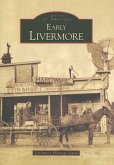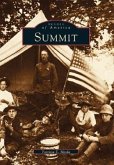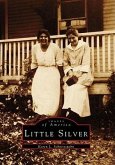Mid-century Livermore saw a demographic shift from farms and ranches to suburbanization and continuing support of the existing health care industry, New Deal programs, a naval airbase, and two national laboratories. The health care industry flourished with the dedication in 1925 of a veterans' hospital, which is still operational today; the Livermore Sanitarium for the treatment of alcoholism and mental disorders; and the Del Valle Sanitarium for the treatment of tuberculosis. During the 1930s, Livermore residents supported the Hetch Hetchy Project and numerous efforts of the Works Progress Administration. A naval airbase for training pilots was established in 1942, during World War II. This base became the Lawrence Livermore Radiation Laboratory in the 1950s and was soon accompanied by an extension of Sandia National Laboratories across the street.
Hinweis: Dieser Artikel kann nur an eine deutsche Lieferadresse ausgeliefert werden.
Hinweis: Dieser Artikel kann nur an eine deutsche Lieferadresse ausgeliefert werden.








